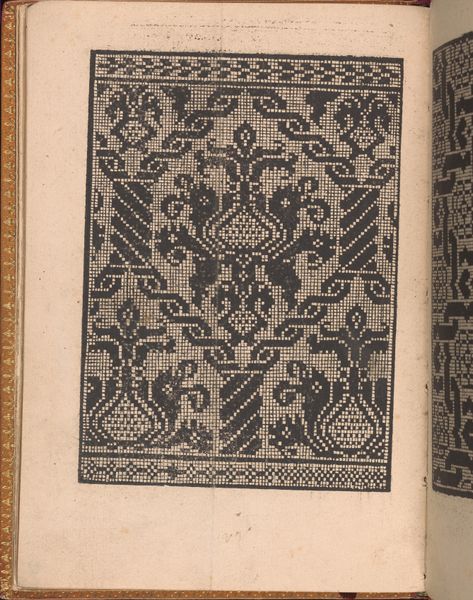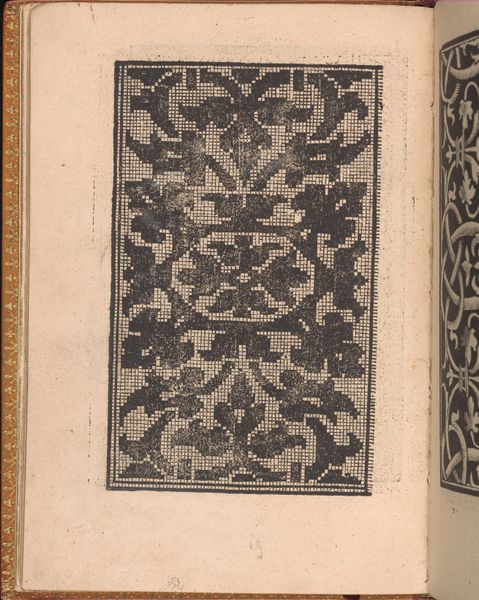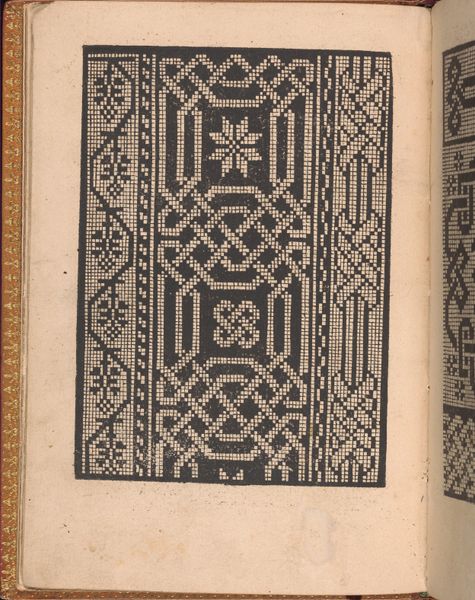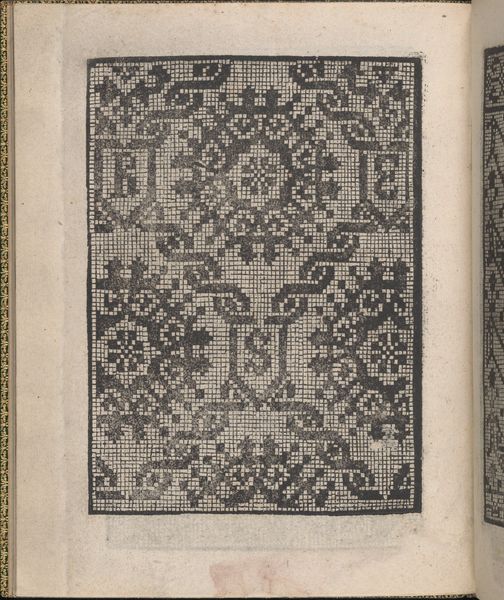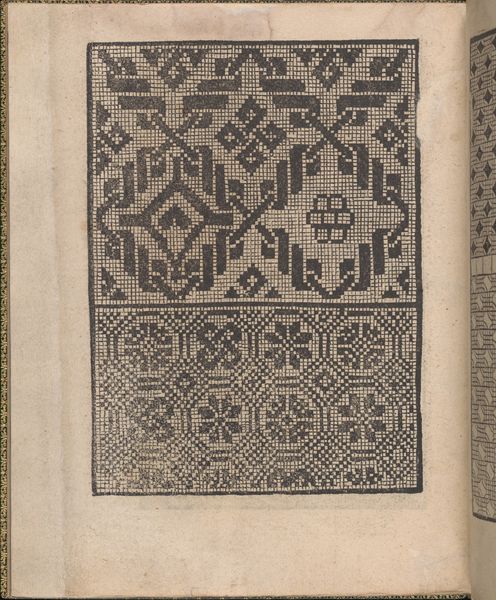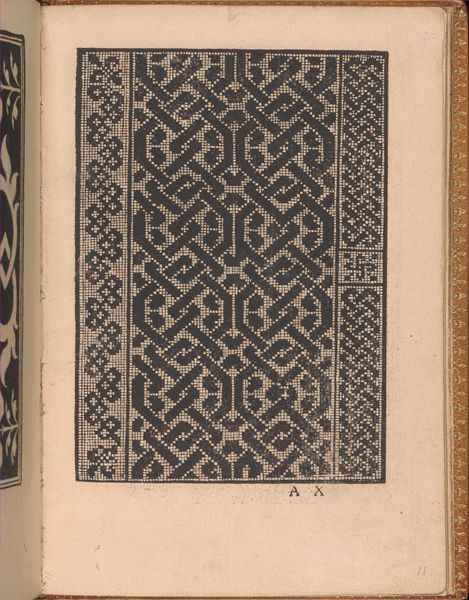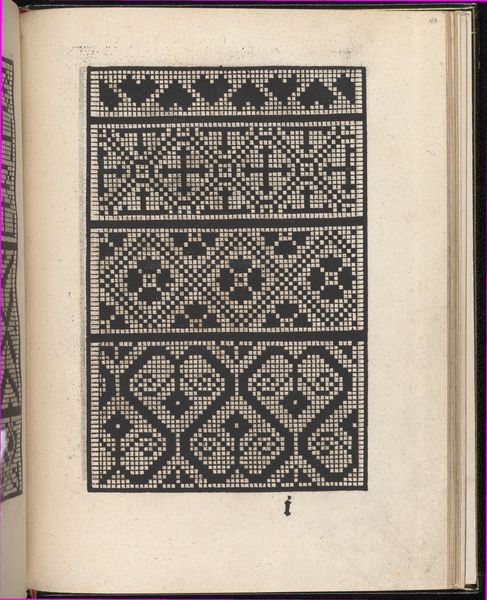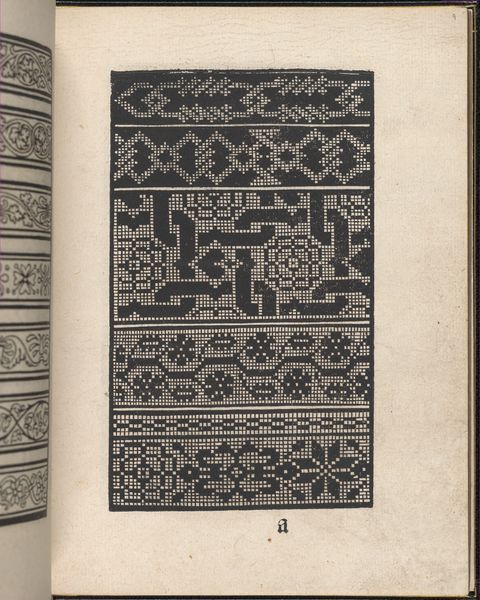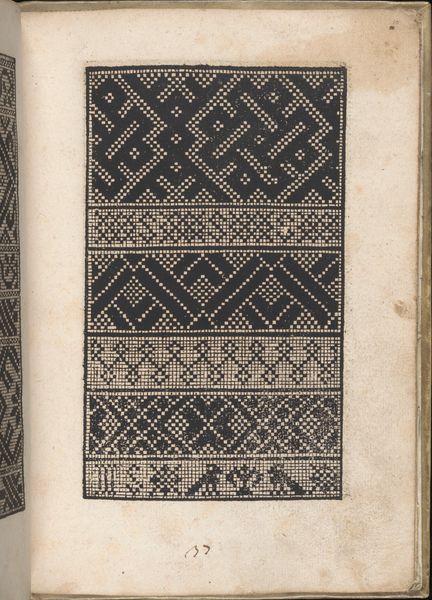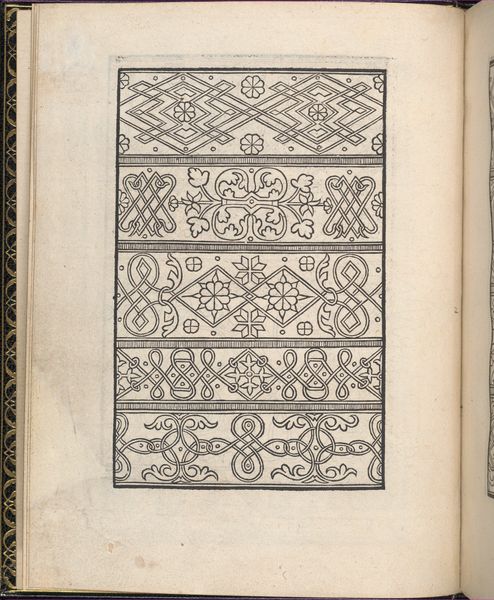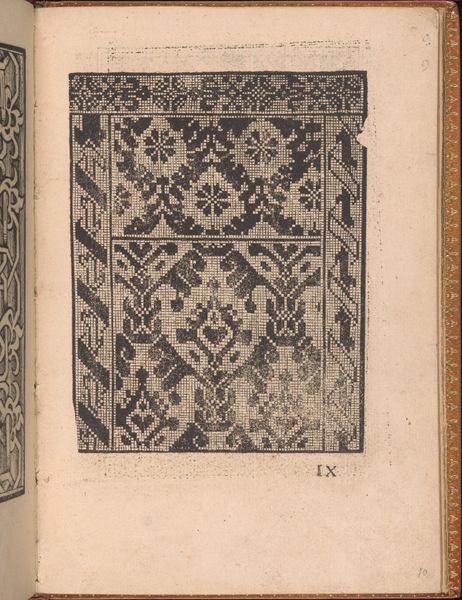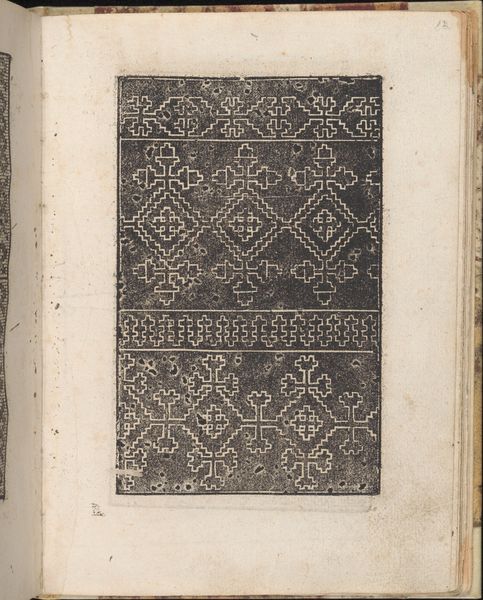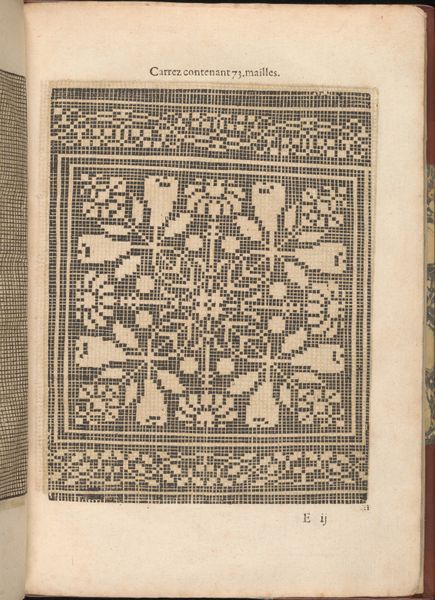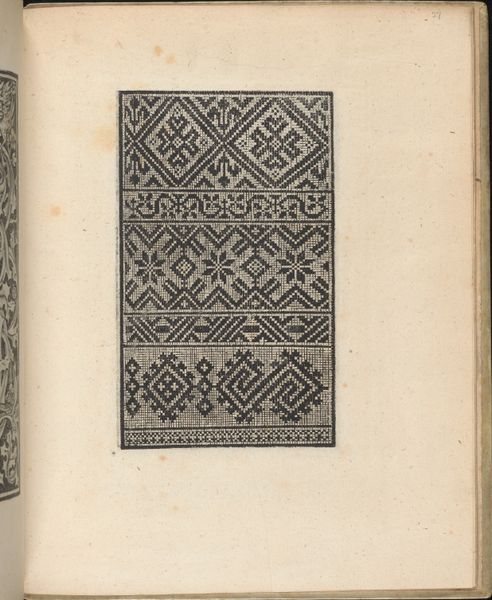
drawing, graphic-art, print
#
drawing
#
graphic-art
# print
#
pattern
#
11_renaissance
#
geometric
#
decorative-art
Dimensions: Overall: 7 7/8 x 5 1/2 in. (20 x 14 cm)
Copyright: Public Domain
Curator: This page is from "Convivio delle Belle Donne," or "A Gathering of Beautiful Women," a print by Nicolò Zoppino, created in 1532. It is a page in an instructional book for women that includes patterns to follow for decorative arts such as needlework, and comes to us courtesy of the Metropolitan Museum of Art. Editor: My initial impression is that it resembles a complex code, filled with geometric forms. The dense composition gives it a sense of almost vibrating energy, like a puzzle box just waiting to be unlocked. Curator: I am very interested in the purpose behind publications such as this. How women in the Renaissance were active participants in shaping the domestic sphere and also contributed to local markets for artisan craft goods. The "Gathering of Beautiful Women" refers to those women using their creative skills, developing techniques that allowed them an avenue to participate in social and economic circles. Editor: Absolutely, I see a deeper layer—this isn’t just about craft; it's about cultural transmission. The patterns carry meaning and connection. These women using the design were active participants in preserving cultural memory as well. The patterns were not simple decorative features; they represented values, identities, and beliefs of the community that was also conveyed to the family through these handmade items. Curator: Yes, this makes me wonder, how did publishers at the time curate content to ensure alignment with specific socio-political views of their audience? The print is one of very few pages in the book that depicts patterns made to serve specific cultural practices. Who had the deciding power of these specific depictions? Editor: That’s such an intriguing point. I'm also thinking of the motifs embedded here, each carefully placed. The symmetry in these interlaced lines, floral elements—do they refer back to classical allegories? I see elements reminiscent of labyrinth designs. Are these about something beyond beauty and skill, hinting toward knowledge, and perhaps the journeys the Renaissance women made to claim power? Curator: That consideration leads me to think that through books like "Convivio delle Belle Donne", we begin to question how notions of power and gender played out in this time. We learn to recognize needlework, weaving, and embroidery as forms of cultural exchange, especially through publications accessible to the wider community. Editor: This makes you appreciate that even seemingly functional or domestic-centered artworks speak volumes about the times, and can hint to secret, less overt purposes. Curator: Exactly. These materials of print have proven that we need to examine cultural history to gain greater insights on societal progression.
Comments
No comments
Be the first to comment and join the conversation on the ultimate creative platform.
